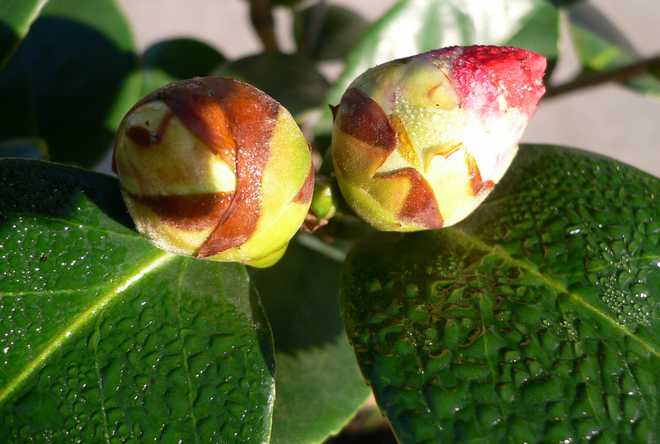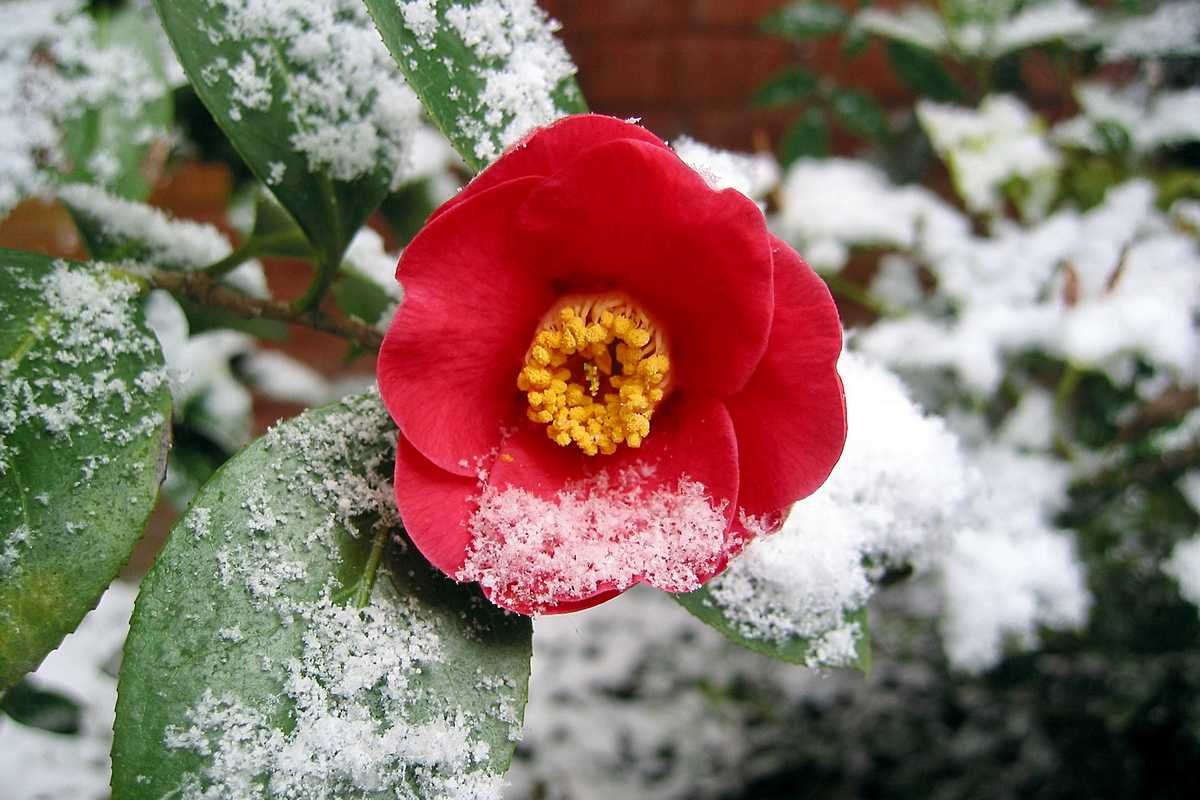
If Camellias are evergreen shrubs that bloom in late winter, they probably like the cold. They are hardy to -15 to -20 ° C! In reality, not all tolerate it. On the contrary, some even have the reputation of being chilly plants and should be grown in pots.
Mild temperatures for the Camellia
The requirements of Camellia, which blooms in winter and early spring, are numerous. Depending on the climate and the exposure of your garden, it is important to take this into account:
- The Camellia cannot stand hot heat, especially when placed in full sun.
- It also does not tolerate sudden changes in temperature, especially the alternation of hot and cold.
- Aside from the more hardy varieties, climates that are too cold are not suitable for it either!
Finally, only a few regions offer it ideal growing conditions: Brittany, Normandy and the entire Atlantic coast. The rains are indeed sufficiently important and the winters rather mild.
But, even in these areas, plant this heather earth shrub in mild sun, partial shade, or even outright shade! Never plant it in the east so as not to thaw it too quickly in the morning in winter.
In very cold regions such as eastern France, it is advisable to plant only the most resistant varieties. They can even be installed almost exclusively in the shade so that they do not suffer from rapid thaws in the leaves.
If it’s not freezing, set up the Fall Camellia in early spring. In pots, use a well-drained, light and humus-rich growing medium. It is advisable to ensure good drainage by placing a thick layer of clay balls or gravel at the bottom of the pot.
Since Camellia likes acidic soil, don’t hesitate to mix a good deal of heather soil with the soil in your garden.
Should we cover the Camellia in winter?
Generally yes, because the superficial roots of Camellia are very sensitive to cold.
Camellia planted in a pot
- To protect the roots, surround the pot with several layers of wintering veil held in place with duct tape. Take care to trap as much air as possible between the different layers to provide thermal insulation.
- Complete the protection on the surface of the pot with a good thickness of straw or dead leaves.
- Move your camellia near a wall sheltering it from the cold wind, more on the north side. You will avoid sudden temperature changes between day and night, especially in late winter.
Camellia in soil: A lighter protection against the cold
The roots of your Camellia grown in the ground are not at risk until the ground is frozen. Corn:
- To protect the flower buds and leaves from severe frost, tighten the branches slightly by wrapping them in a string so that they can then cover with a wintering veil.
- Only maintain this winter cover on the coldest days. Remove it as soon as possible, even between two periods of frost, so that the antlers can breathe as much as possible. This type of protection should be used occasionally, especially when flower buds or single or double flowers are forming. Otherwise, they may rot and fall before they open!
- In severe frost (-5 to -10 ° C), extend protection to the roots of the shrub. Spread pine bark or fallen leaves around the trunk to maintain the natural softness of the earth. This simple protection can stay in place all winter. It is often enough to gain some precious degrees of hardiness.
Watering Camellia in winter
If you’ve potted your camellia under an overhang or balcony, consider watering it so it doesn’t die of thirst. Leave a small opening at the bottom of the wintering veil, just enough to slide the spout of the watering can. Pour in soft water.
Give plenty of water until the root ball is well soaked. Let it moisten for long minutes. Remember at the end to empty the water that has collected in the saucer at the bottom of the pot. Otherwise, the roots rot easily and their sensitivity to cold is accentuated.
If your Camellia is planted in the ground, it usually rains enough that you don’t have to think about watering it.

Camelia in winter: Flower buds froze
If your Camellia is placed in full sun, we have seen that the thaw can be too brutal, damaging buds forming, those ready to bloom and even flowers already in bloom.
In this case, it is advisable to do a slight pruning of the Camellia, only to remove the spots burned by the cold. Increase the protections but above all do not prune more, at the risk of missing out on all the flowering!

